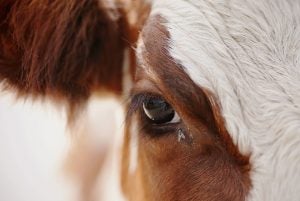There’s lots of summer fun that comes with days spent on the farm, both in work and leisure. One of the things that is certainly not fun are the pests, namely flies. On farms, you can find flies of all shapes, sizes, and colors. We’ve got flies that suck blood, flies that suck ocular fluids, and flies that bite. We know how we got ’em (kinda, sometimes I’m convinced they spontaneously regenerate), now we want to ask, how do we get rid of them?
While inevitable in some capacity, flies are more than a serious nuisance, they are also major vectors that carry some nasty diseases. Serving as little flying agents of infection, they can spread diseases among livestock, across different farms, and even infiltrate the farmhouse bringing human health risks.

The first step to defeating your enemy is knowing what they are. Exact species you encounter depend on your region, but the primary culprits tend to be house and stable flies. But other common ones include your deer, face, horn, and bot flies. And yes, the females of all of these can lay anywhere from hundreds to thousands of eggs per day at the peak of their life cycles. Yikes. Luckily, they all look for the same kinds of environments to reproduce making it possible to remove, or at least limit, them.
Flies look for decaying, wet organic matter to lay eggs, including fresh manure, old bedding, compost, carcasses, old grain, and the like. Of course, no matter how much you try, there were always be some of these conditions on the farm, but you can mitigate it by tactics such as proper manure storage, frequent removal, and other hygiene practices. Fun fact: Research has found a single pound of wet manure can sustain and produce over 1,500 maggots.
Make sure you have established locations for disposing of things such as manure, compost and other organic materials. In peak fly season, you should try to commit to at least weekly removal of these kinds of things. Don’t forget to check places materials could be hiding, like the corner of shops, commodity sheds, and anywhere you handle feed, grain or silage.
For sanity and safety reasons, commit to “fly free zones” in high traffic areas where you install screen doors, traps, and fans. This makes for a much more comfortable and efficient work environment.
Further control methods include biological, chemical and physical. Biological methods can be things like introducing other insects who break the flies’ life cycle that themselves pose little inference. This has become increasingly popular, and not just for organic and natural dairies.
Sprays, baits, larvicides, and misters are your standard chemical controls. You can even implement larvicide feed additives and insecticide ear tags for livestock. And of course, it always helps to keep the tried and true knockdown aerosol sprays on hand in certain areas.
It’s frustrating, it’s inconvenient, but it is part of summer and life on the farm. Fly control is one of those issues that can spin out of control very quickly if left unchecked. And once out of control, it seems like an overwhelming issue to get a handle back on. But flies, as with most external parasites, can be managed in quite simply if you take conscious preventive measures.
Jaclyn Krymowski is a graduate of The Ohio State University with a major in animal industries and minor in agriculture communications. She is an enthusiastic agvocate, professional freelance writer, and blogs at the-herdbook.com.



